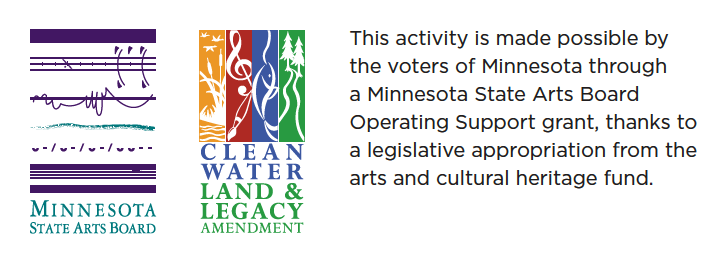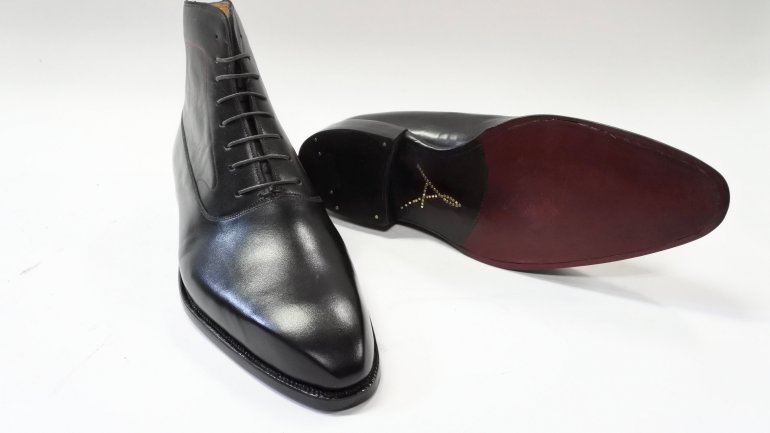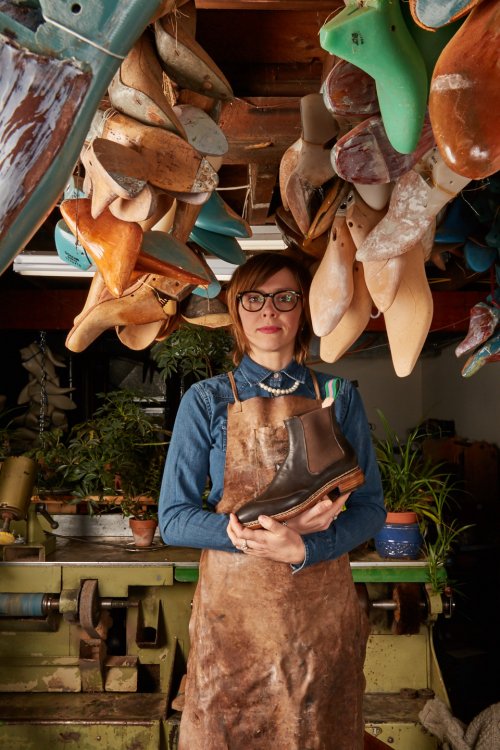Library Salon Series: Q&A with Amara Hark-Weber
I think it was Oprah Winfrey that said, “I still have my feet on the ground. I just wear better shoes.” In the Twin Cities, there are few things better than shoes made by Amara Hark-Weber. Join us on November 8 for our final Library Salon Series talk of the year to meet the shoemaker and 2017 Rare Craft Fellowship Award recipient as she reveals the ins-and-outs of her practice. Hark-Weber recently returned from her fellowship trip to Scotland (stay tuned for an upcoming post about that), and we caught up with her to get a sense of what she'll share with us next week.
I understand that shoemaking has traditionally been a fairly male-dominated field. Can you speak a little bit about what your experience has been as a woman making shoes?
Shoemakers tend to have characteristics that I certainly share, namely: unusually determined, hard-headed, stubbornness, fierce independence, and intuitive ingenuity. In short: We are problem makers and problem solvers. In the past, these character traits were not those commonly encouraged in women. Today, I don’t believe that gender has much to do with the trade. That said, the vast majority of those working as professional shoemakers, including all of my teachers, are men. Personally, I have never felt that being a woman in the trade made me an exception in any way other than that I can get my smaller hand into a shoe more easily to sand the pegs.
You have apprenticed under some seriously great names in shoemaking and fashion design. What has been your favorite apprentice experience? What has been the most challenging?
Learning a new skill is a very frustrating process and can be as difficult for a master to watch as it is for a student to master. I have been amused and amazed by the way in which each of my teachers watched and taught me new hand-skills. Each had their own way of admonishing and encouraging me, depending on the day and the degree to which I offended their eyes, and helping me figure out how to achieve the best results given my personal set of restrictions. And they each used their own very colorful language to do so. I think that my favorite part of working with each of my teachers has been learning their vernacular.
The most challenging part of being a craftsman is looking at one’s own work honestly. Learning to see curve, line, and proportion in shoes is something that I will always be honing. One starts by observing these elements in the work of others, then trying to mimic successful elements and avoid problem areas. But, to apply this level of seeing to one’s own work can be as painful as it is celebratory. It's important to remember that just because I worked very hard on something doesn't make it amazing. Likewise, sometimes I throw something together and it is monumental. The challenge is seeing it for what it is. Working with each of my teachers enabled me to see my work in new ways, and with each reveal came new sets of challenges.
It sounds like much of your business involves working with your customers on ideas and design for custom orders. What has been your favorite project so far? Do you have a favorite shoe style that you enjoy making?
My favorite shoes are usually the ones that just walked out of the shop. I go through a very predictable arc of joy and despair with every pair in trying to please the client, challenge myself, and learn something new. When the shoes are complete and the client is happy, I am elated. Until I start the next pair. That said, I do have particular things that I work on. Right now, I am thinking about how proportion can alter the way in which a shoe appears more masculine or feminine, and I'm obsessed with the curve top of the shoe and how it interacts with the body and the other curves of the shoe. The relationship between the topline, fit, and aesthetic is surprisingly complicated, which I've been learning the hard way. I’m always interested in color and am on an ongoing exploration of how seams create shape both in volume and on surface planes. There are so many elements that go into making a shoe, when I stop to think about what I’m especially excited or intrigued by, my mind starts going wild.
As the 2017 Rare Craft Fellowship Award recipient, what has that done for your practice?
Being a Rare Craft Fellowship Award recipient has been a true honor and made a big impact on my practice, in my shop, and in my personal understanding of what it means to be a craftsman today. Materially, I was able to buy some new equipment and, for the first time, my workshop feels like a place in which I can really thrive as a maker. I was also able to work with Chris Francis to learn a bit about high heels. This was a great experience and totally out of my comfort zone as a maker. And, of course, there was the trip to the UK, where I visited makers, distributors, archives, and museums, as well as craftsmen working well outside the footwear arena. Seeing the many ways of running a workshop as both a space for making and a business was a game changer.
Be sure to join us Wednesday, November 8, to meet Amara and hear more about her practice.






